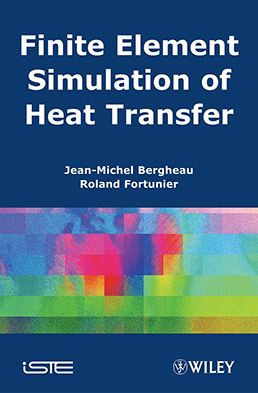
This book introduces the finite element method applied to the resolution of industrial heat transfer problems. Starting from steady conduction, the method is gradually extended to transient regimes, to traditional non-linearities and to convective phenomena. Coupled problems involving heat transfer are then presented. Three types of couplings are discussed: coupling through boundary conditions (such as radiative heat transfer in cavities), addition of state variables (such as metallurgical phase change) and coupling through partial differential equations (such as electrical phenomena).
A review of the various thermal phenomena is drawn up, which an engineer can simulate. The methods presented will enable the reader to achieve optimal use from finite element software and also to develop new applications.
Part 1. Steady Conduction
1. Mathematical Formulation.
2. The Finite Element Method.
3. Isoparametric Elements.
Part 2. Transient Conduction, Non-Linearities, Convective Heat Transfer
4. Transient Conduction.
5. Non-Linearities.
6. Convective Heat Transfer.
Part 3. Coupled Problems
7. Radiation Exchanges in a Chamber.
8. Fluid-Structure Interaction in a Pipe.
9. Metallurgical Phase Change.
10. Thermal and Electrical Phenomena.
Jean-Michel Bergheau is professor at the National Engineering College of Saint-Etienne. He used to manage the development of industrial finite element software before joining academic research. He is presently working on modelling and numerical simulation of coupled physical phenomena.
Roland Fortunier is professor at the 'Ecole des Mines' of Saint-Etienne. He has acquired 8 years experience in steel industry working on manufacturing processes before joining academic research in material science and mechanical engineering.